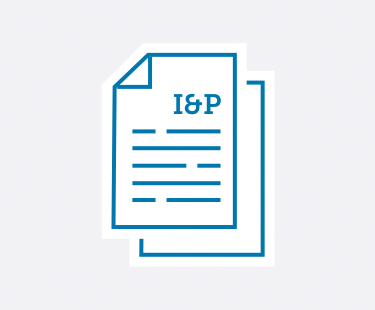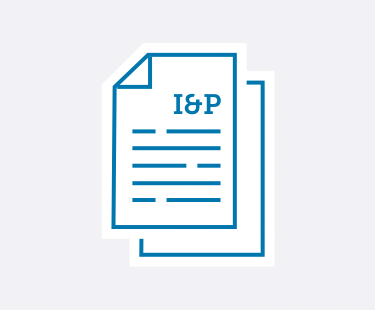

Learn practical strategies to handle emerging trends and leadership challenges in private schools.
No matter if you’re a School Head, Admission Director, Development Director, Board member, or any other private school administrator—Ideas & Perspectives®, ISM’s premier private school publication, has strategic solutions for the pervasive problems you face.
- Tuition not keeping pace with your expenses? In I&P, explore how to use strategic financial planning to create your budget and appropriately adjust your tuition.
- Enrollment dropping off? Discover how to implement the right admission and enrollment management strategies that engage your community—and fill your classrooms.
- Trouble retaining teachers? Learn how you can best support your teachers using ISM’s Comprehensive Faculty Development framework. Your faculty members will become more enthusiastic about their roles—which ultimately improves student outcomes.
- Fundraising campaigns not as successful as you’d hoped? Implement ISM’s practical advice and guidance to build a thriving annual fund, construct an effective capital campaign, and secure major donors—no matter your community size or location.
- Not sure how to provide professional development—for you and your staff? Learn ways to develop and fund a successful professional development strategy. You can improve teacher-centered satisfaction and growth, which in turn strengthens student-centered learning.
- Problematic schedule? You can master the challenges of scheduling with the help of ISM’s practical advice, based on our experience with hundreds of schools and our time-tested theories.
- And so much more.
I&P has shared targeted research, up-to-date insight, and sound theory with school leaders since 1975. More than 8,500 private school decision-makers find the answers to their schools’ administrative and governance matters in our advisory letter. We give you the strategic answers you need.
As an ISM Silver or Gold member, you not only receive issues online and in print 10 times a year, but you have access to 900+ articles in our web archive. Need help? It’s at your fingertips! Learn more and sign up for ISM's membership here.
Search
See the articles from our latest issue of Ideas & Perspectives.
Faculty, Space, Ownership, and the Schedule
Volume 41 No. 14 // November 7, 2016
ISM has been largely concerned with management and leadership research and improved practice. Throughout, we have advised school leaders within the context of a school’s own mission and the impact of our advice on the lives of students. In our research, we discovered the principle of “freedom-within-structure,” ISM’s predictability and support model that is the foundation of great teaching practice. While structure/predictability was construed as “what the teacher wanted to do” in the conventional (20th century) educational paradigm, the new paradigm (21st century) includes the teacher and the student in an ever-evolving relationship.
1. Already a member? Click here to login.
2. Not a member? Click here to become a member.
3. Not sure? We'll help you figure it out.
Private-Independent Schools and Personal Financial Information
Volume 41 No. 14 // November 7, 2016
Private-independent schools typically do not think of themselves as financial institutions. But their engagement in certain financial activities may subject them to obligations under the federal Financial Services Modernization Act of 1999, commonly known as the Gramm-Leach-Bliley Act (GLBA). Additionally, every school that hires any third-party vendor with access to the “nonpublic personal information” (NPI) of employees or students should be concerned about the terms and conditions of the contract relating to data protection and response to data breaches. To the extent that those vendors perform financial activities and are covered by GLBA, then contract provisions relating to GLBA compliance are important and the school should ensure that they are adequate.
1. Already a member? Click here to login.
2. Not a member? Click here to become a member.
3. Not sure? We'll help you figure it out.
Faculty, Facilities, and Technology
Volume 41 No. 13 // October 17, 2016
Private-independent schools have struggled with integrating technology into buildings for many years now, facing issues such as bandwidth and power sources. Planning our school buildings now requires a deeper conversation that includes teachers. While some schools continue to eschew the greater use of technology for philosophical reasons, most schools that embrace and integrate the use of new technology have a competitive edge in the education landscape. This does not imply that technology is necessarily an attractant. More fundamentally, the power of personalized, adaptive technology and feedback enhances instruction and learning, and can be a game changer in the effectiveness of the school’s mission delivery.
1. Already a member? Click here to login.
2. Not a member? Click here to become a member.
3. Not sure? We'll help you figure it out.
Tailoring Your Five-Minute Speech
Volume 41 No. 13 // October 17, 2016
As the Marketing Communications Director, you understand that a five-minute speech is a valuable marketing tool—an effective strategy that generates good word-of-mouth. Handled properly, the speech shares accurate, positive information about your school. Whether the audience is an auditorium full of families waiting for a performance to begin, a representative of the media, or a small group of donors, use the opportunity to train your listeners in ways they can talk about your school. Each speech should be personalized, not generic or “canned.
1. Already a member? Click here to login.
2. Not a member? Click here to become a member.
3. Not sure? We'll help you figure it out.
School Head Evaluation: Essential Expectations
Volume 41 No. 13 // October 17, 2016
ISM’s long-standing recommendation is that the Board President annually form a Head Support and Evaluation Committee (HSEC) to work with the School Head to: create a list of major School Head goals at the start of each year; identify or develop an array of data bearing on each goal; support the Head throughout the year in analyzing the data and introducing, as needed, midcourse corrections; and produce at year-end a summary/critique pertinent to each goal for presentation to the Board President.
1. Already a member? Click here to login.
2. Not a member? Click here to become a member.
3. Not sure? We'll help you figure it out.
The Committee on Trustees Calendar
Volume 41 No. 13 // October 17, 2016
By accepting the role of Chair of your Board’s Committee on Trustees (COT), you have accepted leadership of a committee that ISM regards as one of the Board’s most critical for the strategic success of the school you serve: that is, success as a viable and sustainable institution for the long term. Aside from your everyday, year-round task of providing as-needed assistance to the Board President—partnering with her or him to insure the smooth, strategically focused operations of the Board—you will find there is a predictable cycle of tasks the COT can expect to undertake in most years. (“Most years” refers to the fact that Boards occasionally face tasks of such magnitude that a standard Board calendar cannot realistically be followed, such as a year in which the search for a new School Head is conducted.)
1. Already a member? Click here to login.
2. Not a member? Click here to become a member.
3. Not sure? We'll help you figure it out.
Refocus Your Board Agenda and Your Board Minutes
Volume 41 No. 12 // September 23, 2016
There is a close relationship between the quality of your Board-meeting agenda and your Board meeting minutes. If one of those is done in a perfunctory or unfocused manner, so, often, is the other. Frequently the Board meeting agenda is, in fact, merely a generic meeting outline that is retained for meeting after meeting with little attention given to it from one session to the next. That being the case, the meetings themselves may become formless discussions of whatever topics come to mind, a meandering process that will sometimes be reflected in formless, meandering Board meeting minutes.
1. Already a member? Click here to login.
2. Not a member? Click here to become a member.
3. Not sure? We'll help you figure it out.
A Renewed Perspective for Professional Development
Volume 41 No. 12 // September 23, 2016
What should professional development be today? A decade ago, we published an article, “The Changing Paradigm for Professional Development,” that contrasted the descending paradigm of teacher-centered satisfaction with the ascending paradigm of student-centered learning. While the broad strokes of teaching improvement have been laid out many times, re-evaluate this in the light of increasing competition in the marketplace and because the context of professional development (PD) has changed as part of the broader education revolution.
1. Already a member? Click here to login.
2. Not a member? Click here to become a member.
3. Not sure? We'll help you figure it out.
In Their Own Words: What Students Want
Volume 41 No. 12 // September 23, 2016
ISM’s long-standing contention has been that schools have two primary markets: parents and students. Over time, we have seen an increase in the influence students have on enrollment decisions. From ISM surveys representing nearly 1,000 parents, 11% of respondents indicated that their children had significant to total influence, and 28% said that their children had equal influence. As one would expect, the level of influence increases with each grade, particularly beginning in the sixth grade. But even kindergartners are reported to have significant influence for some parents. To remain sustainable, a school must appeal to both parents and students from the admission process through graduation.
1. Already a member? Click here to login.
2. Not a member? Click here to become a member.
3. Not sure? We'll help you figure it out.
Lines of Authority and Your Operating Budget
Volume 41 No. 11 // September 6, 2016
Once the Board passes the annual budget, in conformity with the strategic financial plan numbers on Line 6 (hard income profit and loss)and Line 7 (the percent of operating expense covered by total hard income), the Head controls Line 5 (operating expense). He or she determines the best ways to spend those funds. Typical Line 5 headings include compensation, instructional expenses, advancement, technology, administration, operations and maintenance, and athletics and student services. Discussion of these lines is never a Board agenda item. They are undoubtedly part of the conversation for the Finance Committee where the details of the budget are hashed out. But, even then, the conversation is far more about the realism behind numbers (e.g., the inevitable increase in health costs or increase in faculty compensation) than it is about whether this or that should be done. That is an operations responsibility.
1. Already a member? Click here to login.
2. Not a member? Click here to become a member.
3. Not sure? We'll help you figure it out.


